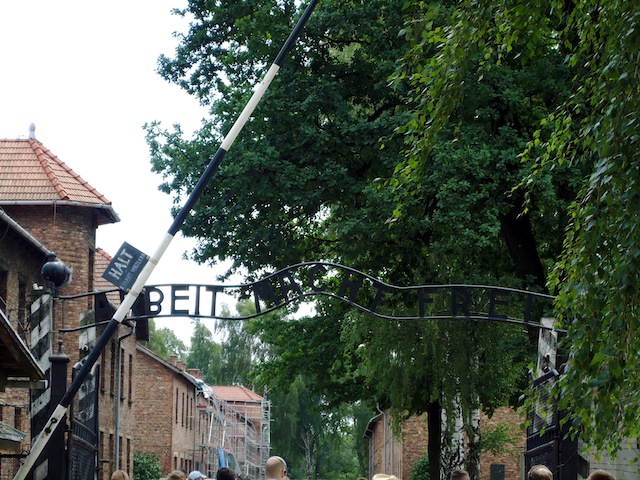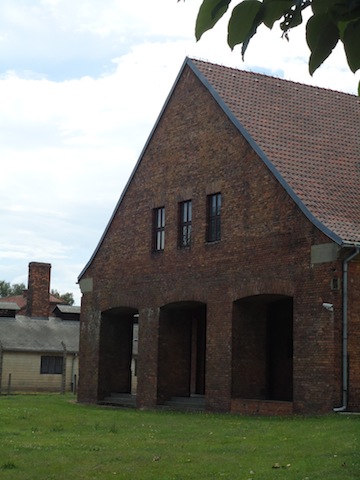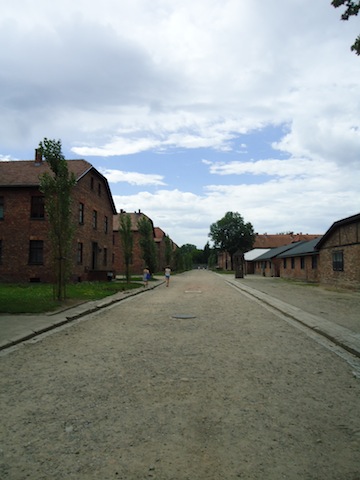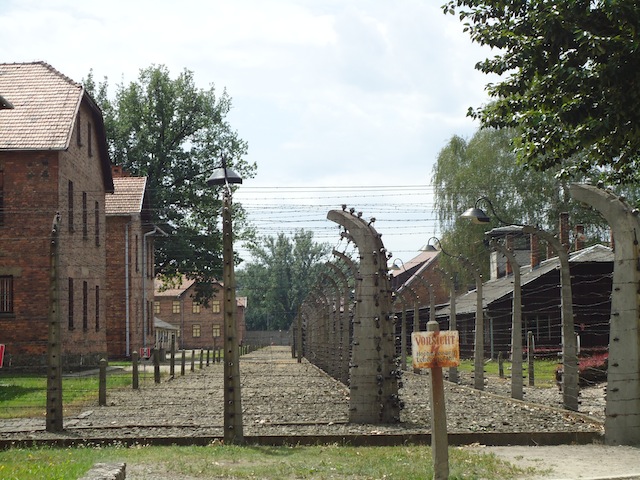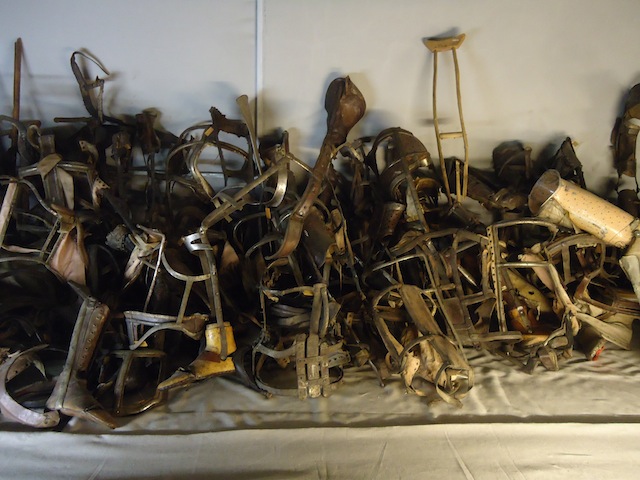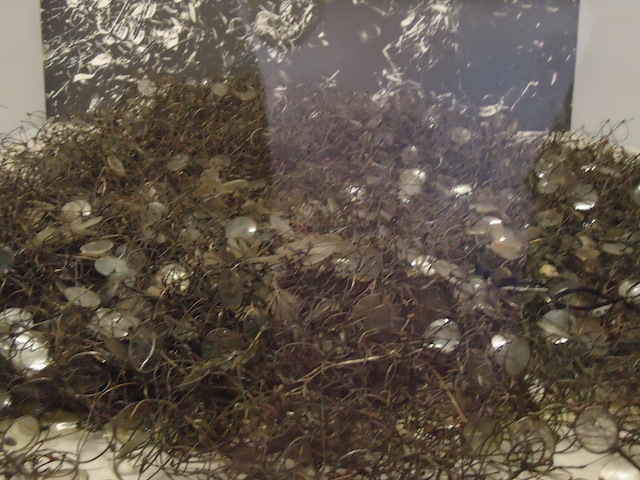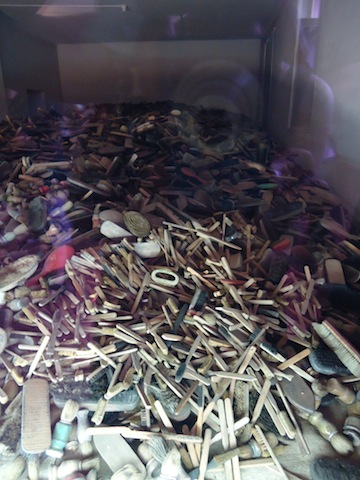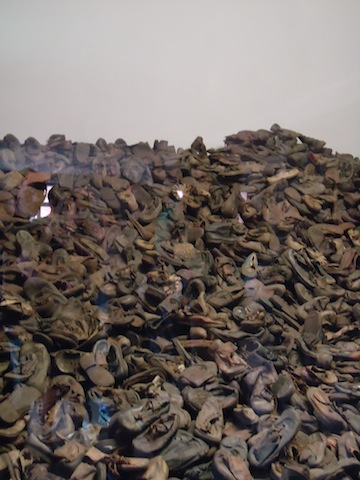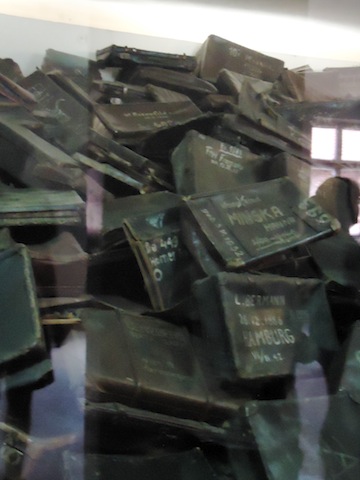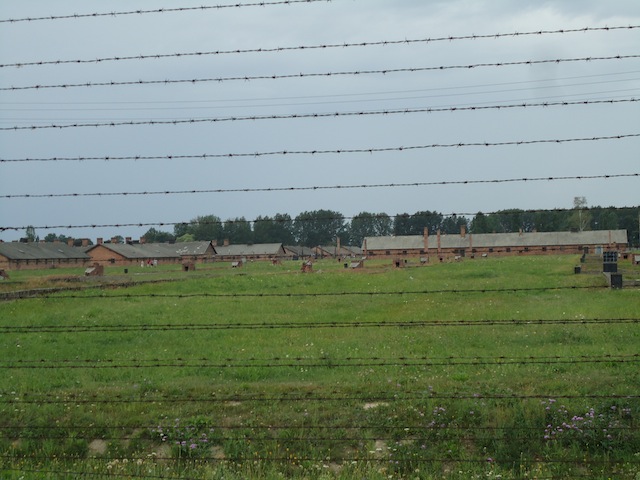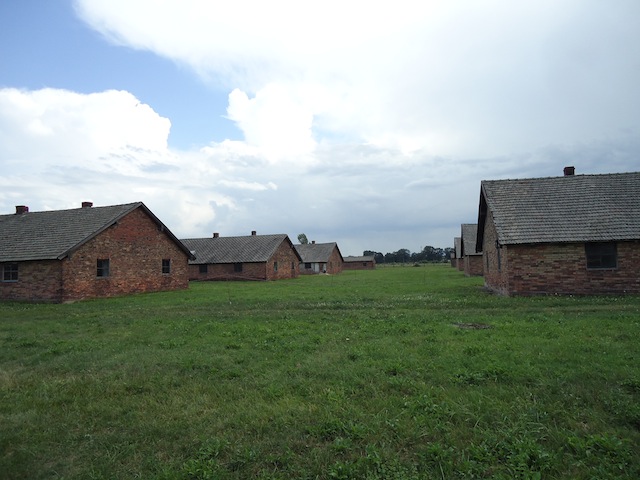Auschwitz is one of those places that you have heard of, but you do not want to believe that it is real. I have debated posting about my trip to Auschwitz today for many reasons. Auschwitz is experienced at highly personal and emotional level. What I express in this post are merely my thoughts and how today has affected me.
After hours of reflection what led me to post about today was the simple fact that while I cannot change the past or what has happened here, I can help spread the story. And it is a story that deserves to be told. Unfortunately this blog post will only be a tiny dew drop on top of the surface of everything that happened here and the millions of stories that weave together what Auschwitz once was. But, here it goes.
The holocaust is something that I have always been interested in. I have read countless memoirs, watched documentaries and even payed attention in history class every year that this topic was discussed. I can read anything, no matter how horrific, because words allow there to be degrees of separation which comfortably protect me from the harshness of reality.
I have read several historical memoirs about Auschwitz. Most recently the book Rena’s Promise by Heather Dune Macadam. I highly recommend this book for Rena’s compelling story of survival and the rich historical details. Knowing that today I would actually be seeing what I have read about caused an anxiety that I was not expecting.
The tears began as soon as the bus left the rolling hills of the Polish countryside and pulled into the parking lot at Auschwitz. I was there. I was there at the place where millions of people lost their precious lives for reasons that will never make sense. I was there where the cattle carts that millions of people from all over Europe were transported on having no idea what the future held for them. The overwhelming emotions I was experiencing are indescribable.
Entering Auschwitz itself was eerie. It was a gorgeous day. The sun was out, the skies were blue and Auschwitz was calm and peaceful. Calm and peace. Those are two emotions that I am pretty sure those who were sent to live and die here rarely, if ever, felt inside these gates.
It is estimated that 1.3 million people were sent to Auschwitz and Birkenau (Auschwitz 2 – built because Auschwitz simply was not large enough). 1.1 million of the 1.3 million sent to Auschwitz and Birkenau died. You can do the math, only a few had the strength, courage, resilience and faith to survive. Estimates of how many people were sent to Auschwitz and how many people died varies. However, the constant is that very few survived. Jewish people from all over Europe were transported here. Even as far away as Norway and Greece. For some people, they were stuck in a cattle car for over two weeks until they arrived.
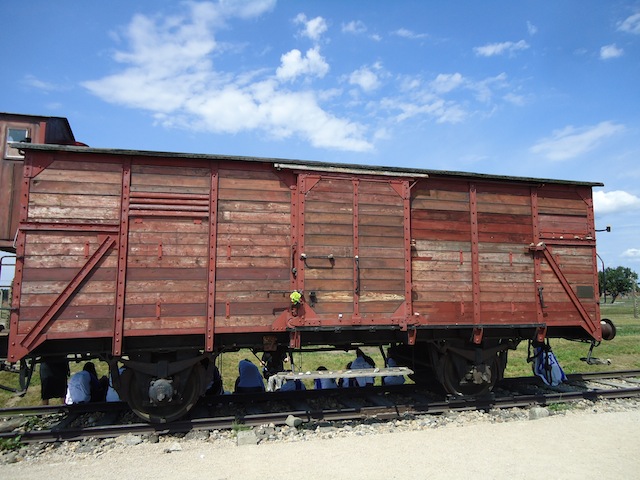
This cattle car symbolizes how people were transported to Auschwitz and Birkenau. If you look closely, you can see children wearing the Flag of Israel.
How could something so awful happen to so many innocent people? This is the question that has always floated in my mind in regards to holocaust. It spoke to me even louder today.
The part of the day that I found most difficult was viewing the items left by the ghosts of Auschwitz. Thousands of suitcases and their items illustrate that those who were transported to Auschwitz had no idea of their fate. Displays with pottery, prayer linens, toothbrushes, make up brushes, shampoo bottles, 40,000 pairs of shoes, eye glasses, clothes and other daily supplies were simply discarded by the Nazis once the people arrived at Auschwitz.
Along with this display, a small case of baby clothes, shoes and rattles sat along the wall. Almost every child who entered Auschwitz was immediately killed. If they were not killed, they became victims of torturous medical experiments by doctors who believed that these innocent young children would be bad when they grew up simply because they were born Jewish or Polish or possessed some other characteristic that could potentially make them seem inhumane to the Nazis. Rest in peace you sweet, precious, innocent children. This was not the life you deserved.
Another haunting display was one of human hair. When people arrived at Auschwitz, their heads and all of their body hair was shaved off. When they were killed, if they had any hair, that too was shaved. Some of the hair was used to make textiles. The display of human hair takes up an entire wall in a long room. At this point in the tour I was so emotionally distraught that I could not take a picture.
How could this happen?
After walking through the death block where people were either shot, starved, hung or made to stand until they died, I walked through a gas chamber. That experience will forever haunt me.
Leaving Auschwitz, the tour continued at Birkenau which lies about two miles away. Birkenau is known as a death camp that is one full square mile. Rena, the woman whose’s memoir I recently read, remembers being forced to build Birkenau not knowing that she would soon end up living there and that the conditions there would actually be worse than at Auschwitz. Rena’s memoir was so accurately detailed that I was able to see exactly where parts of her story took place. Furthermore, the information I learned through her story helped supplement the information provided by our guide.
Imagine living in a small building with several hundred people. If you got a wooden pallet bunk you were lucky. Even if that meant you had to sleep with 3-12 people on that same small bunk. At least you were not on the dirt floor that flooded when it rained.
There were also no toilets in the building; you were only allowed to use the “bathrooms” twice a day. The “bathrooms” had no plumbing and no privacy. The only positive of this was that the Nazi soliders refused to enter because they were afraid of catching diseases. The “bathrooms” became the home for the black market, trading information and having conversations.
There were two gas chambers at this camp. Both were destroyed by the Nazis before the Russian army closed in on the camp in 1945. The ruins are visible today along with very small ponds where the ashes of the bodies were disposed of. Once the ponds became full, the ashes were then transported to a nearby river.
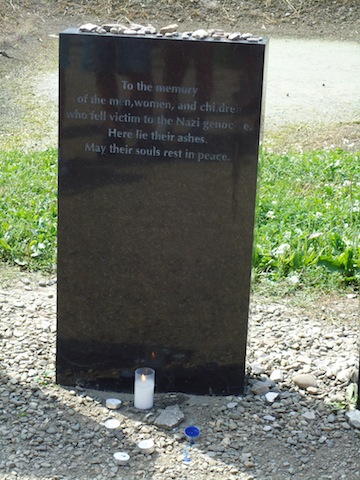
“To the memory of the men, women, and children who fell victim to the Nazi genocide. Here lie their ashes. May their souls rest in peace.”
When you walk through Birkenau today, there are an endless amount of wooden buildings once occupied by those forced to live, work and die there. Scattered among those buildings are ruins of brick chimneys. Some of the wood from the buildings were later taken to rebuild other cities after the war.
I could go on about Auschwitz, the sights and the stories I learned for hours. The most touching point of the day for me occurred at Birkenau. I was standing in the train tunnel where new “prisoners” were transported through along with people from Auschwitz who were deemed no longer fit to work and sent to to be gassed. I was gazing out onto the sprawling complex of buildings. While standing there, dozens of teenage girls holding flags of Israel walked past me.
I looked at each of these beautiful young girls so full of life and promise. Then it hit me. 70 years ago, these same girls would have been sent to Auschwitz. Not all of these girls would have survived. These strong, beautiful and healthy girls were just like the once strong, beautiful and healthy young women who roamed these same grounds under entirely different circumstances. Once again, how in the world could something like this have happened?
What I wrote does not capture how profoundly today impacted me. If you ever get a chance, you must visit Auschwitz. It will be a life changing experience. I am not the same young woman I was this morning. While this experience was emotionally exhausting, it has enriched my life in ways that I cannot describe.
Rest in peace all of you precious souls. I am so sorry that your lives were tortured and sacrificed for senseless reasons. And to the survivors, your resilience is inspiring; thank you for showing me how even in the darkest places the human spirit can still shine. Your stories will always be carried on.
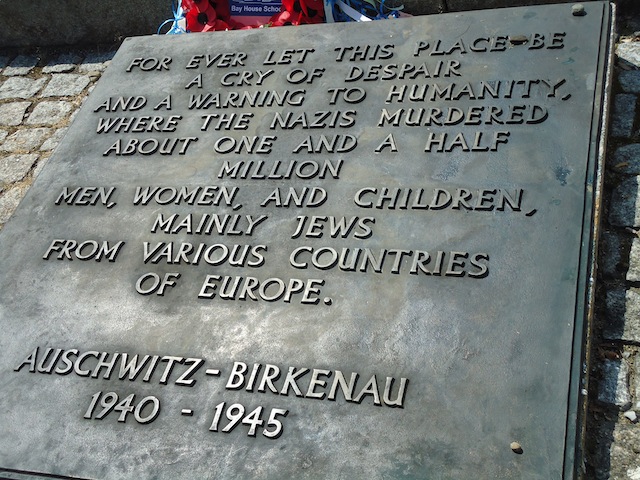
“Forever let this place be a cry of despair and a warning to humanity, where the Nazis murdered about one and a half million men, women and children, mainly Jews from various countries in Europe”

